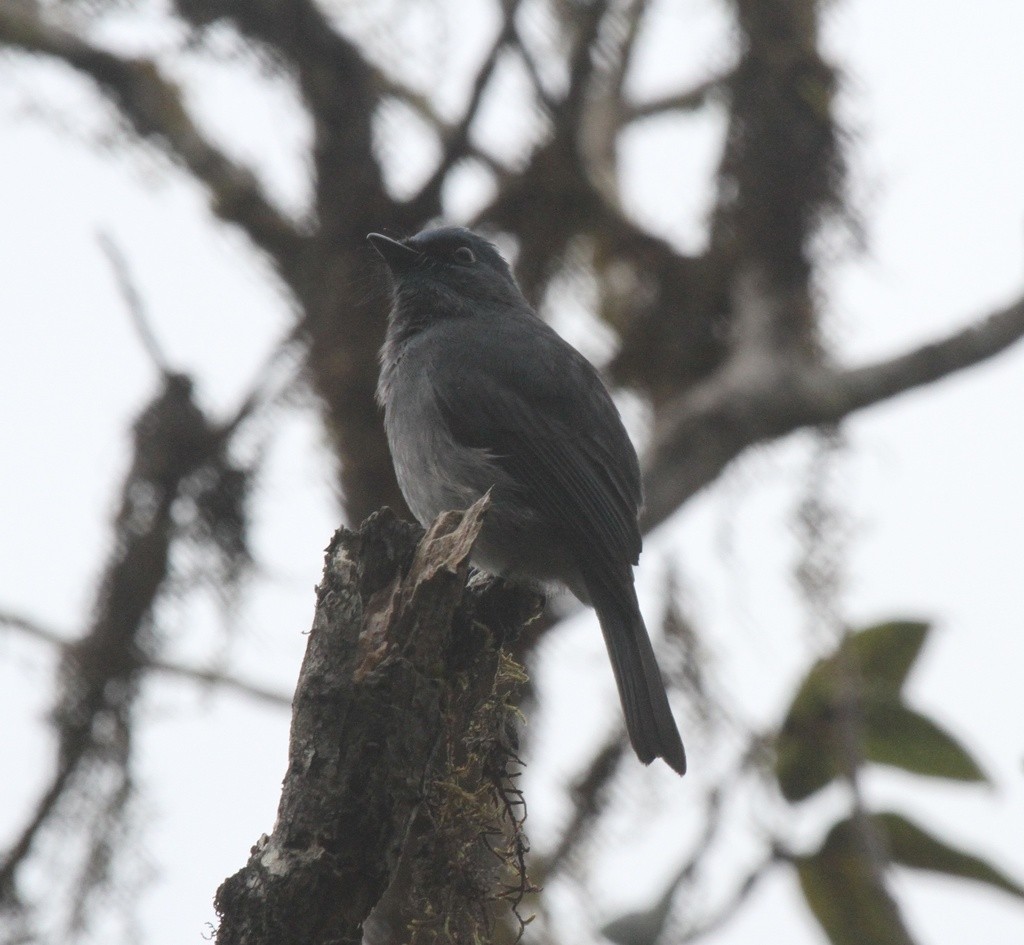Dull-blue Flycatcher
A species of Warbling-flycatchers Scientific name : Eumyias sordidus Genus : Warbling-flycatchers
Dull-blue Flycatcher, A species of Warbling-flycatchers
Botanical name: Eumyias sordidus
Genus: Warbling-flycatchers
Content
Description General Info
 Photo By neomorphus , used under CC-BY-NC-4.0 /Cropped and compressed from original
Photo By neomorphus , used under CC-BY-NC-4.0 /Cropped and compressed from original Description
The dull-blue flycatcher (Eumyias sordidus) is a small passerine bird in the flycatcher family, Muscicapidae. It was previously included in the genus Muscicapa. This species is an endemic resident breeder in the hills of central Sri Lanka. The dull-blue flycatcher breeds in deciduous mountain forest, invariably above 600m, although it is not common below 900m. The main breeding season is in March and April, but a second brood is often reared later in the year. The cup-shaped nest is a lined compact mass of moss. The site is usually a well-shaded rock ledge. The normal clutch is two or three brown-spotted pink eggs are laid. This species is 15 cm long. It is similar in shape to the spotted flycatcher and has a loud melodic song.. Adults are ashy blue, with a whitish belly. There is a black patch between the broad black bill and the eye, bordered with brighter blue above and below. Sexes are similar, but females are slightly duller. Juvenile dull-blue flycatchers are brown, heavily spotted on the head, back, wing-coverts and breast with pale buff; their flight feathers are broadly edged with blue-grey. This is relatively easy bird to see, despite its forest habitat. It feeds mainly on flying insects, beetles, caterpillars and other insects, but also eats berries. 
Size
15 cm
Nest Placement
Tree
Feeding Habits
Dull-blue Flycatcher primarily consumes small invertebrates like beetles and larvae, along with various berries. Often solitary or in pairs, dull-blue Flycatcher forages in low vegetation and sometimes perches conspicuously to feed, although it generally exhibits a sluggish demeanor.
Habitat
Dull-blue Flycatcher typically resides in well-wooded areas including forest edges, clearings, and ravines. It favors environments with an abundance of large shade trees and can also be found in extensive, wooded gardens as well as along the peripheries of plantations. It is known to descend to more humid lowland regions during the non-breeding season.
Dite type
Insectivorous
General Info
Feeding Habits
Bird food type
Scientific Classification
Phylum
Chordates Class
Birds Order
Perching birds Family
Old world flycatchers Genus
Warbling-flycatchers Species
Dull-blue Flycatcher